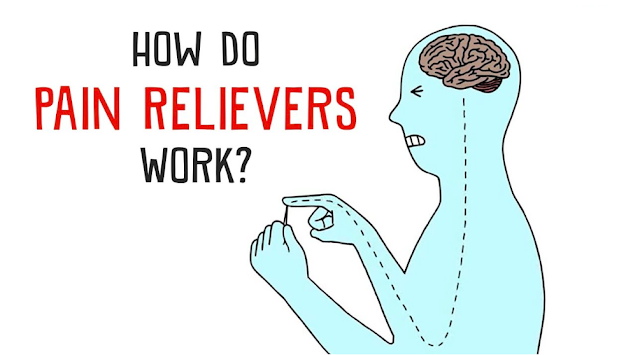You get sand in your eyes when at the beach.
Why do you think there is sand there?
You can’t see it, of course, but if you’re a normal, healthy person, you can feel that excruciating anguish, which is also known as pain. Now, discomfort compels you to act; in this example, you rinsing your eyes until the sand is removed.
How can you know the sand is gone, furthermore?
Exactly. since the suffering has ended. There are those who are pain-free. Even if that sounds cool, it’s not. You risk getting wounded or perhaps hurting yourself without realising it if you can’t feel pain.
Pain is your body’s early warning mechanism. It shields you from both the outside world and your inner self. In the majority of our body parts as we develop, pain sensors are installed. These sensors, known as nociceptors, are specialised nerve cells that extend from your spinal cord to your skin, muscles, joints, teeth, and some internal organs. They transmit electrical impulses to your brain from wherever they are, just like all other nerve cells do. However, nociceptors only fire when something occurs that has the potential to harm or is already doing damage, unlike other nerve cells.
So, lightly contact the needle’s point. The metal will make you feel it, and those are just your normal nerve cells. The ache, though, won’t bother you. Now, as you press harder on the needle, you approach the nociceptor threshold. If you exert enough force, you’ll pass that point, at which point the nociceptors will start firing and signal your body to halt what it’s doing. The pain threshold, however, is not fixed.
Some substances can tune nociceptors, reducing their pain threshold. The nociceptors’ threshold is lowered to the point that even light contact can be painful when cells are injured because they and other surrounding cells begin manufacturing these tuning chemicals frantically. Over-the-counter medicines can help in this situation. Ibuprofen and aspirin prevent the synthesis of prostaglandins, a subclass of these tuning compounds. Let’s examine how they accomplish that. Arachidonic acid is a substance that cells emit when they are injured. Arachidonic acid is turned into prostaglandin H2 by two enzymes known as COX-1 and COX-2. Prostaglandin H2 is subsequently transformed into a variety of different chemicals that have a variety of effects, such as increasing body warmth, causing inflammation, and lowering pain threshold.
Currently, every enzyme has an active site. The reaction takes place there within the enzyme. Arachidonic acid fits snugly in the COX-1 and COX-2 active sites. You can see that there is no extra space. Now, the active site is where aspirin and ibuprofen work. They therefore operate differently. Aspirin functions like a porcupine’s spine. It penetrates the active site, splits off, and leaves half of itself there, completely obstructing the channel and preventing the arachidonic acid from passing through. This rendered COX-1 and COX-2 inactive permanently. Ibuprofen, on the other hand, moves into the enzyme’s active site without altering or disassembling it. When COX-1 and COX-2 are free to spit it out once more, the enzyme is unable to bind arachidonic acid and cannot do its regular chemistry while ibuprofen is present.
But how do ibuprofen and aspirin identify the location of the pain?
Of course not. The medications are carried throughout your body once they are in your bloodstream and they reach painful areas the same way they do normal ones. Thus, it is how ibuprofen and aspirin function. But there are additional facets to suffering. For instance, neuropathic pain develops spontaneously as a result of injury to our neurological system; no external stimulation is required. Additionally, researchers are learning that our brains regulate how we react to pain signals. For instance, your mood or simply your attentiveness to the pain may affect how much discomfort you experience. Research is ongoing in the field of pain.
Related Searches:
how do painkillers know where the pain is, how do pain relievers work brainly, how do pain relievers work quizlet, what is the strongest pain killer, how do pain relievers work, how long does pain reliever take to work, side effects of painkiller, what do painkillers do.
List of Tags:
painkillers, science, pain, health, nervous system, nerves, medicine, biology, biochemistry, emergency toothache relief, sciatica pain relief, tooth pain relief, biofreeze gel, immediate relief for sciatica pain, sciatic nerve pain relief, lower back pain relief, back pain relief, acetaminophen.



